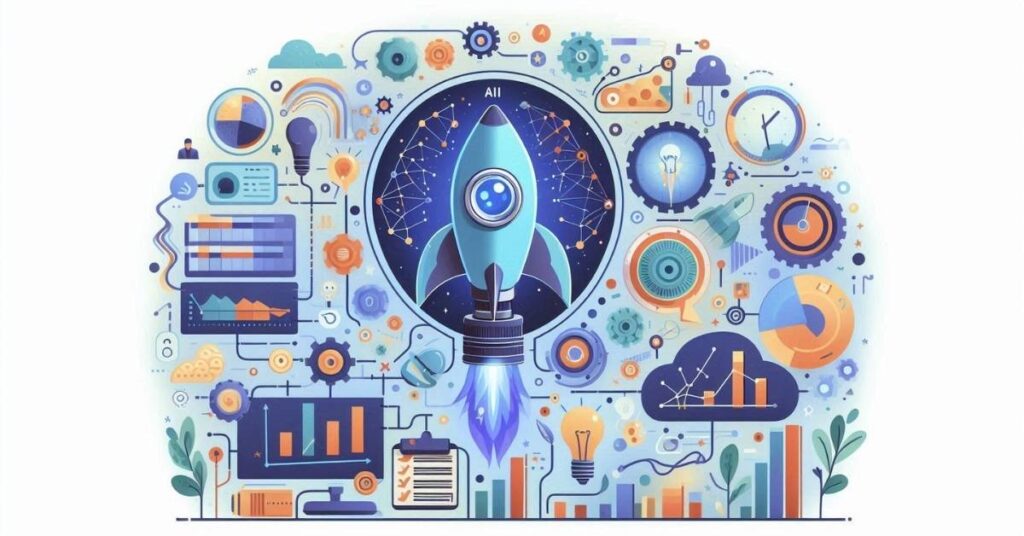
In the fast-paced world of B2B sales, data is everywhere—but insight is everything. Sales leaders are flooded with dashboards, reports, and performance metrics, yet many still struggle to answer a critical question: What should we do next? This is where AI-powered sales analytics becomes transformative. It doesn’t just gather and visualize data—it interprets it, predicts outcomes, and prescribes action. For organizations aiming to scale revenue and boost productivity, AI sales analytics offers a game-changing edge by converting raw data into powerful, real-time decision-making tools.
The Rise of AI in Sales Analytics
Sales analytics has come a long way from static spreadsheets and rearview reporting. Today, AI-infused analytics tools are enabling businesses to track, measure, and forecast performance across every stage of the sales funnel. From identifying high-value opportunities to spotting pipeline risks, AI-powered platforms use machine learning, predictive modeling, and natural language processing to surface insights that are both precise and actionable. Whether you’re in healthcare, ecommerce, SaaS, or banking, these tools are transforming how sales teams operate—making them smarter, faster, and more proactive.
From Data Collection to Data Intelligence
Collecting data is no longer the challenge—it’s interpreting it at scale. AI bridges that gap by identifying patterns in massive data sets that human analysts might overlook. For example, it can detect a drop in engagement from a key account weeks before it becomes a churn risk. Or it might notice that deals over a certain value close 30% faster when a specific product demo is involved. These aren’t just metrics—they’re insights that lead to strategy shifts. AI converts historical performance into future guidance, empowering sales leaders to act with confidence.
Predictive Sales Forecasting with Machine Learning
Traditional forecasting methods rely heavily on gut feeling and linear projections. AI replaces guesswork with precision. Using historical sales data, lead behavior, win/loss rates, and external market signals, AI models can forecast pipeline velocity, deal likelihood, and revenue projections with remarkable accuracy. These forecasts are dynamic—constantly learning and updating as new data flows in. This means sales leaders can pivot faster, allocate resources better, and make strategic decisions based on probability, not possibility.
Identifying Hidden Opportunities in Your Pipeline
Most sales pipelines are filled with leads that look promising on paper but never convert. AI dives deeper. By analyzing customer profiles, engagement patterns, firmographics, and even sentiment in communications, AI tools can identify which leads are most likely to close and why. It helps SDRs and AEs prioritize high-intent prospects and focus their time where it counts. This results in more efficient outreach, higher conversion rates, and shorter sales cycles. Tools like Salesforce Einstein and Salesix.ai’s AI voice agent platform integrate these capabilities directly into daily workflows, making smart selling effortless.
Enhancing Sales Coaching with Data-Backed Insights
AI analytics isn’t just for strategy—it’s for skill development too. By analyzing call transcripts, meeting recordings, email conversations, and deal outcomes, AI can pinpoint patterns in rep behavior that lead to success—or failure. Which opening lines lead to better engagement? How do top performers handle objections differently? AI provides concrete coaching points backed by data, allowing managers to give reps the feedback they actually need. Over time, this leads to a more consistent, high-performing sales team.
Real-Time Alerts and Risk Detection
The modern sales cycle moves fast, and missing key signals can cost deals. AI-powered analytics tools can set up real-time alerts when something significant happens—whether it’s a prospect going cold, a drop in product interest, or a competitor entering the conversation. These signals are drawn from CRM data, email threads, call logs, and third-party insights. Instead of digging through reports, sales leaders receive a curated list of red flags and green lights, enabling them to act instantly and decisively.
AI Voice Agents as a Data Goldmine
Voice AI isn’t just a tool for outreach—it’s a powerful analytics engine. AI voice agents like those from Salesix.ai don’t just talk; they listen, record, and interpret. Every conversation is transcribed, analyzed, and scored in real time, offering insights on customer sentiment, urgency, objection trends, and more. This conversational intelligence becomes an invaluable feedback loop, feeding directly into your sales analytics ecosystem. It’s like having an analyst on every call, capturing intelligence that CRM notes often miss.
Integrating AI Analytics into Your Tech Stack
For maximum impact, AI-powered analytics must be deeply integrated with your existing sales tools—CRMs, marketing platforms, voice systems, and collaboration software. When these systems share data, AI can build a 360-degree view of your customer journey, from first touch to closed-won. Tools like HubSpot, Zoho, and Microsoft Dynamics are increasingly adding AI modules that analyze activity across all channels. Salesix.ai’s voice agents also plug into these ecosystems, enriching them with real-time conversational data.
Making Insight Actionable: The Final Step
Insight without action is wasted potential. The final—and most crucial—step is translating AI-driven insights into clear, executable actions. This might mean tweaking messaging, redistributing lead ownership, launching a new outreach sequence, or realigning territories. The best AI platforms don’t just deliver insights; they recommend next steps and, in many cases, automate the action itself. The future of analytics isn’t just about knowing more—it’s about doing more, faster.
Conclusion
AI-powered sales analytics is no longer a luxury—it’s a necessity for teams looking to gain a competitive edge. By transforming raw data into actionable insights, AI enables smarter forecasting, sharper targeting, better coaching, and real-time decision-making. Whether it’s through predictive modeling, intelligent AI voice agents, or real-time sentiment analysis, the goal remains the same: better outcomes through better understanding. For sales teams ready to elevate their performance, AI isn’t just a tool—it’s a strategic partner.




